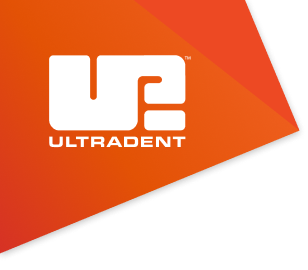Effective cleaning and shaping of the root canal are central to the success of any endodontic therapy. Irrigation protocol serves as a critical step in eliminating microorganisms, dissolving organic debris, and preparing the root canal space for obturation.
Ultradent’s endodontic irrigants and irrigation protocol optimize disinfection to promote the best outcomes for you and your patients.
Step 1:
During mechanical preparation, use a NaviTip™ Double Sideport Irrigator tip to deliver 3% sodium hypochlorite (e.g., ChlorCid™, ChlorCid™ V, or ChlorCid™ Surf solutions) into the root canal. Irrigate the canal thoroughly to dissolve organic debris and disinfect the root canal space.
Step 2:
After finishing the filing and enlargement of the root canal walls, suction excess sodium hypochlorite from the canal.
Step 3:
Flush the root canal system with sterile water to remove any remaining sodium hypochlorite and/or debris.
Step 4:
Use a Capillary tip to suction residual sterile water from the canal.
Step 5:
Use a NaviTip™ FX™ tip to deliver Ultradent™ EDTA 18% solution into the root canal. Move the brush tip up and down for one minute, agitating and brushing to chelate and remove the smear layer to facilitate better penetration of subsequent medicaments. The brush on the NaviTip FX tip allows you to clean, scrub, and irrigate simultaneously.
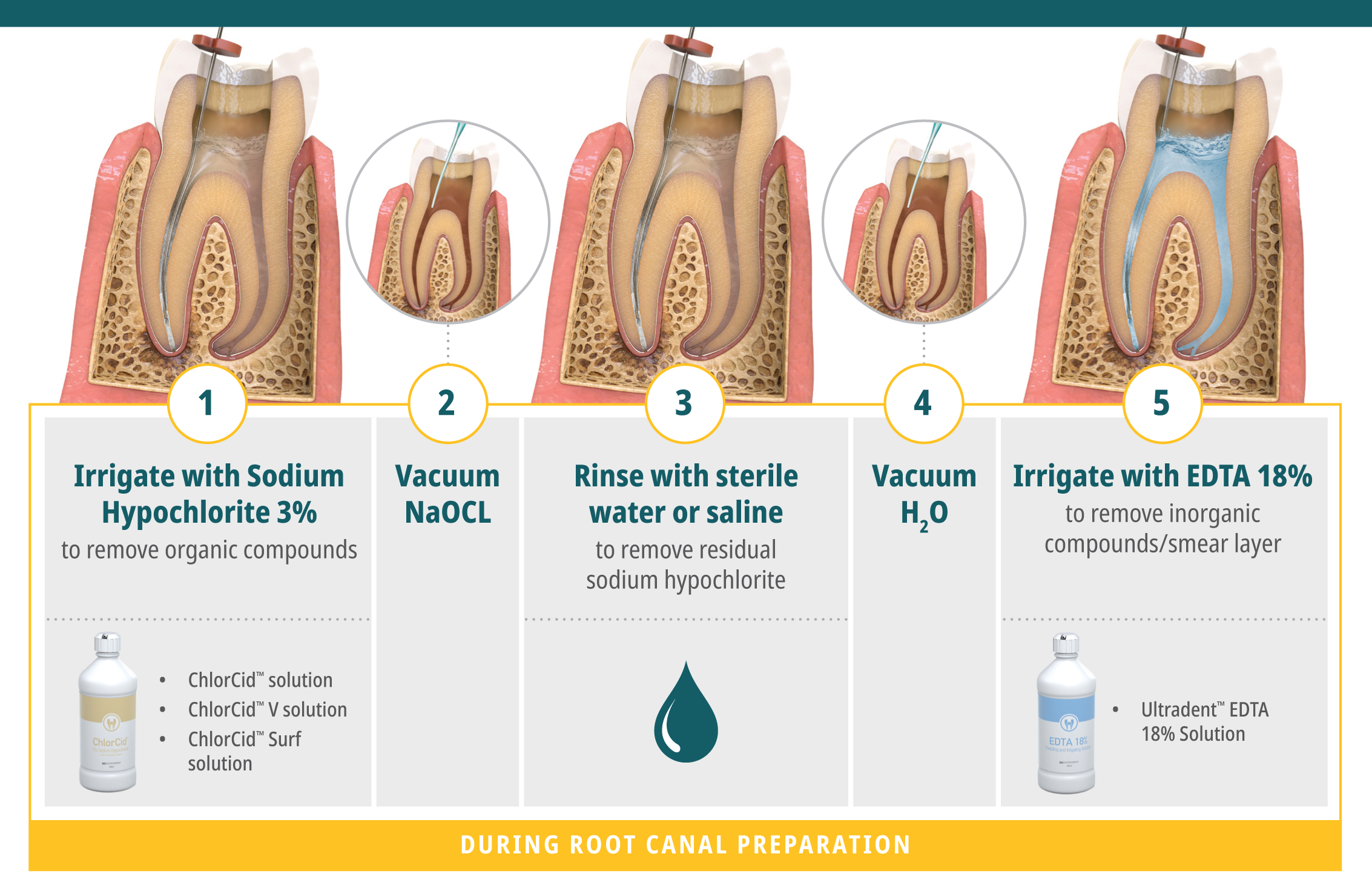
Step 6:
Use a Capillary tip to suction excess EDTA solution from the canal.
Step 7:
Flush the root canal system with sterile water to remove any remaining EDTA and/or debris.
Step 8:
Use a Capillary tip to suction residual sterile water from the canal.
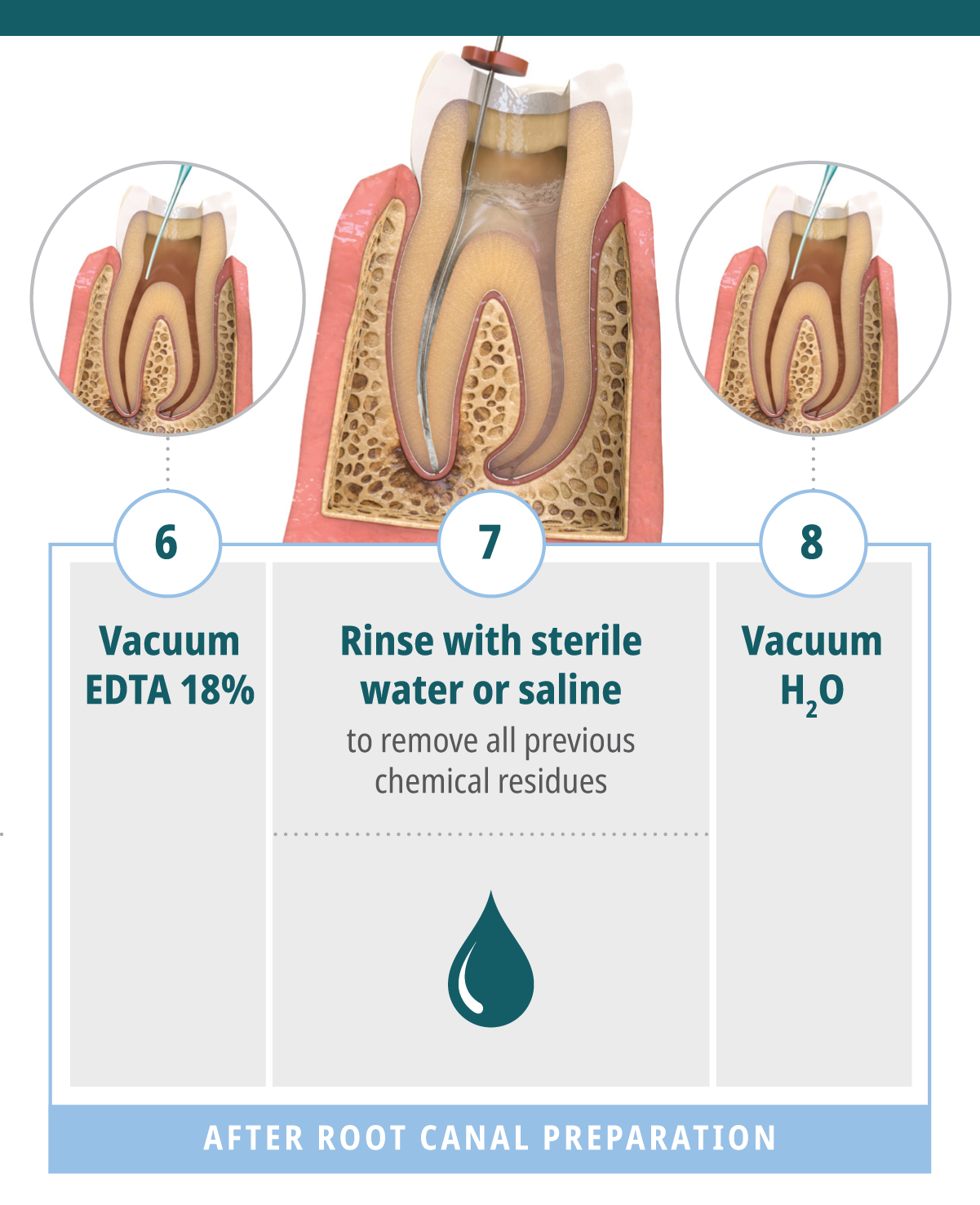
Step 9:*
Upon completion of cleaning and shaping canal, use a NaviTip™ tip to deliver chlorhexidine antibacterial solution (e.g., Consepsis™ or Consepsis™ V solutions*) into the root canal. Leave for one minute to assist antimicrobial activity and help prevent bacterial recontamination.
If using Consepsis V solution, rinse thoroughly with sterile water and perform a final rinse with Consepsis solution and thoroughly dry.
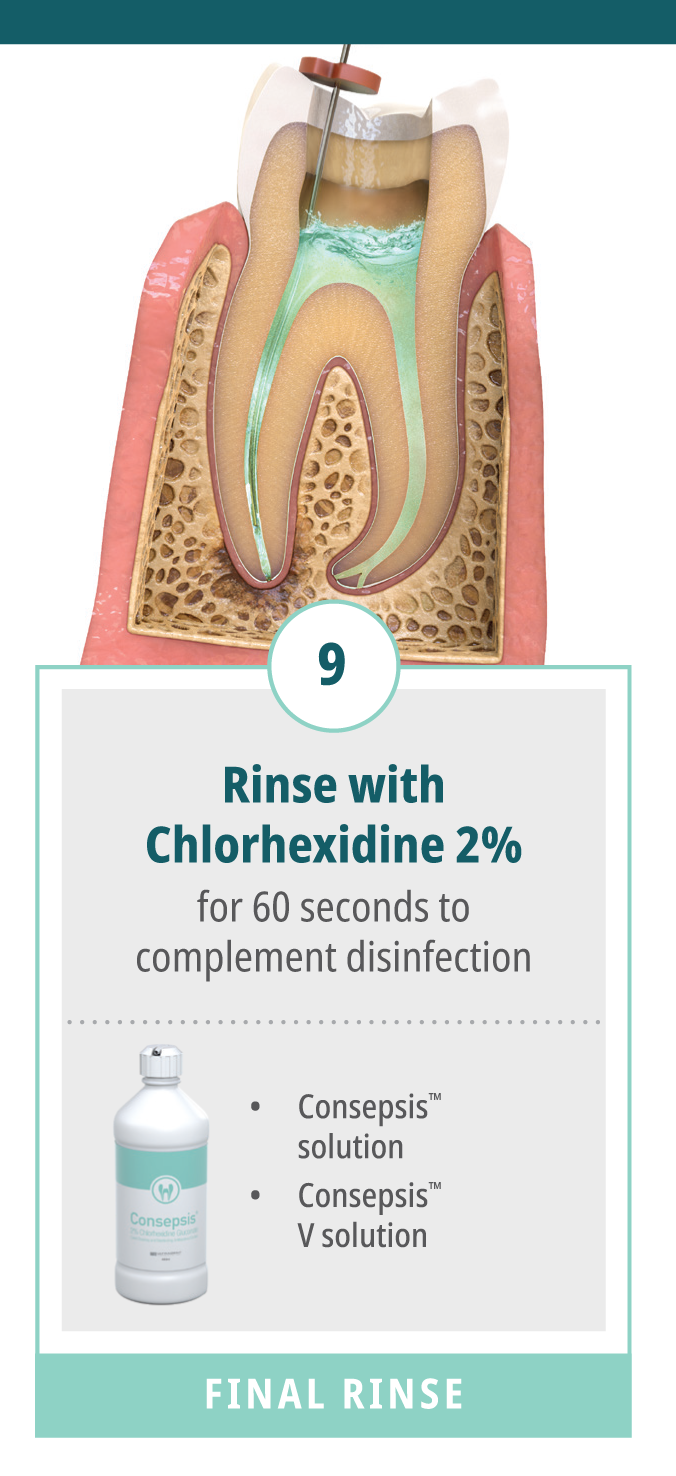
Step 10:
Use a Capillary tip to suction excess chlorhexidine solution from the canal.
Step 11:
Use a NaviTip™ Single Sideport tip to deliver UltraCal™ XS calcium hydroxide paste into the root canal. UltraCal XS paste elevates the pH to alkaline, making it ideal for interappointment dressing.1
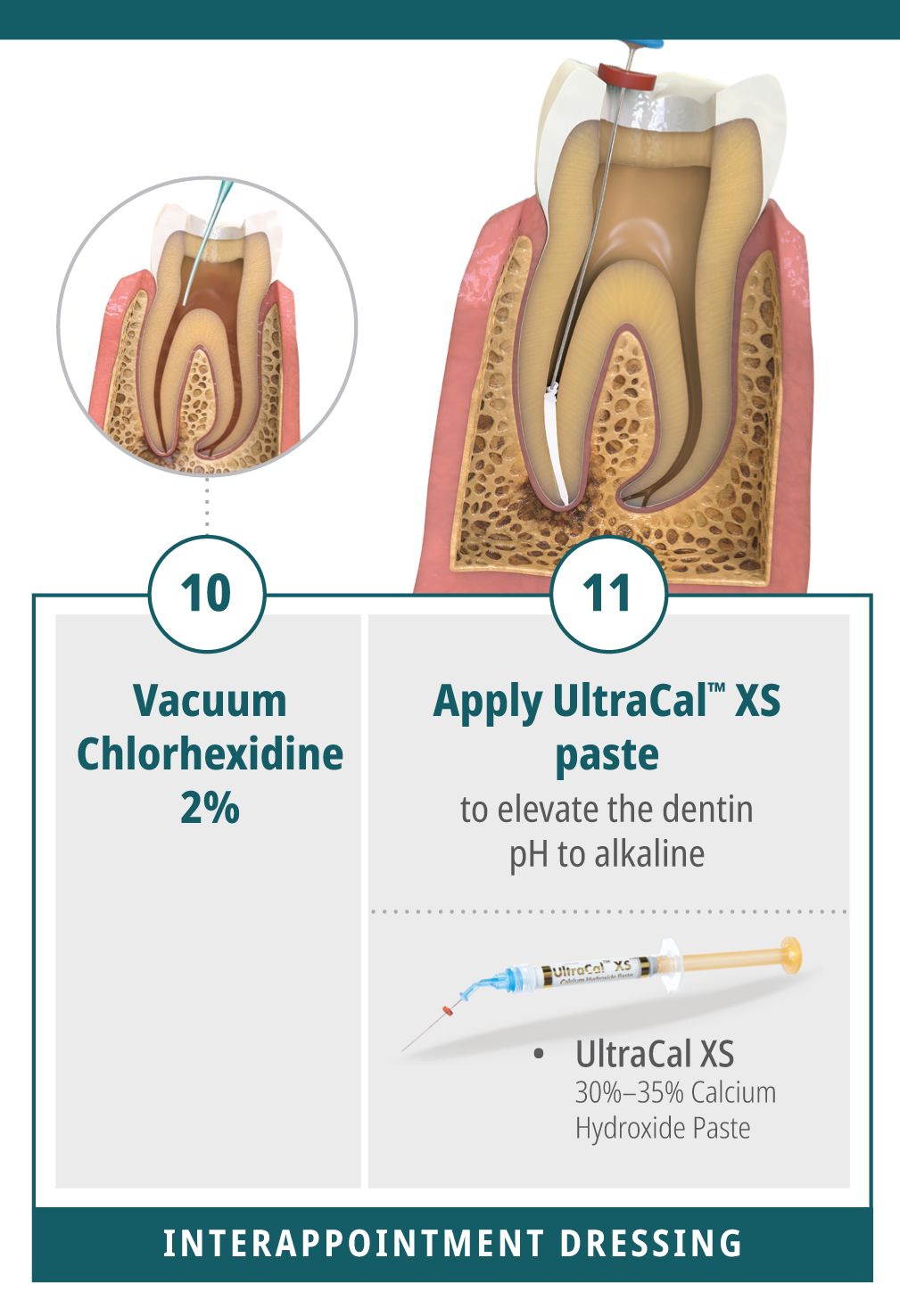
* DO NOT mix Consepsis or Consepsis V solutions or any chlorhexidine solution with ChlorCid or any other sodium hypochlorite solutions in the canal, as a harmful brown precipitate will form.
Consepsis V solution can be used as an auxiliary chemical and lubricant during endodontic preparation.
1. Pedrinha VF, Cuellar MRC, de Barros MC, et al. The vehicles of calcium hydroxide pastes interfere with antimicrobial effect, biofilm polysaccharidic matrix, and pastes' physicochemical properties. Biomedicines. 2022;10(12):3123. doi:10.3390/biomedicines10123123

